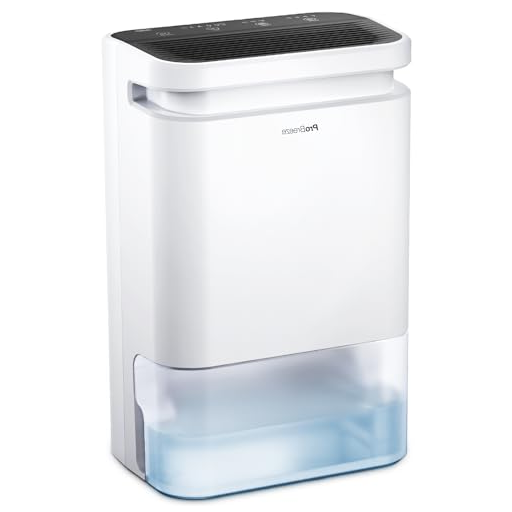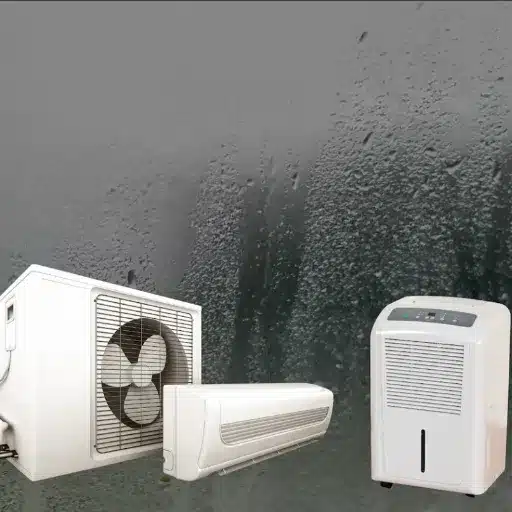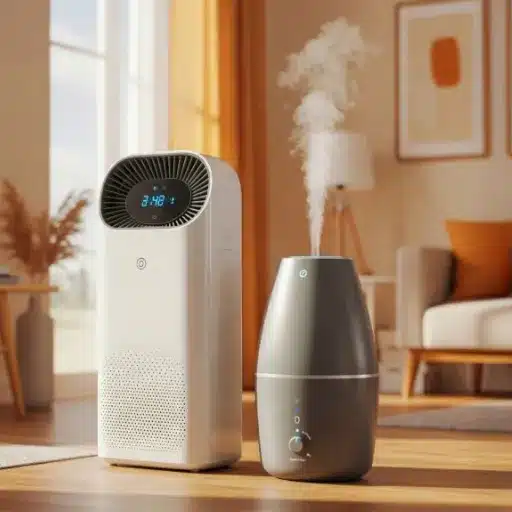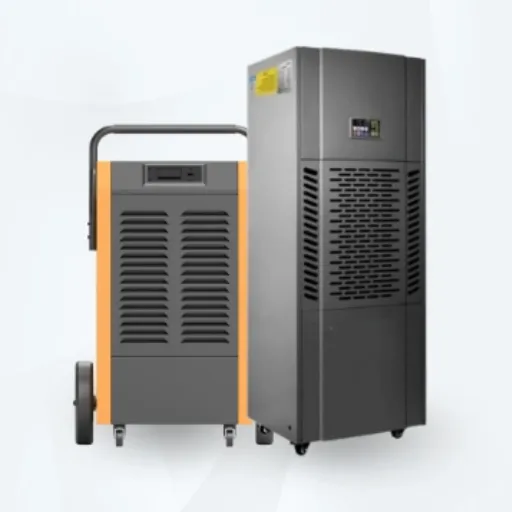Dehumidifiers play a crucial role in maintaining a comfortable and healthy indoor environment by regulating humidity levels, preventing mold growth, and improving air quality. However, a common question among homeowners is whether it’s safe or even practical to leave a dehumidifier running continuously throughout the day. While dehumidifiers are designed to be efficient and durable, their operation raises important considerations regarding energy consumption, device longevity, and optimal usage. This article will explore the pros and cons of running a dehumidifier all day, provide best practices for effective use, and help you decide the ideal approach for your needs and home environment.
Safety Considerations for Running a Dehumidifier
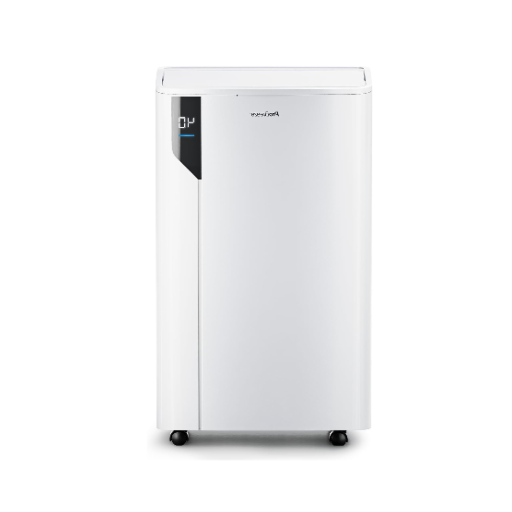
Potential Hazards of Continuous Operation
Operating a dehumidifier continuously can lead to overheating, especially if the unit is not designed for 24-hour usage. It is also worth noting that the long hours of operation can cause wear and tear on the motor, eventually ending in motor failure, thereby affecting the life expectancy of the device. To avoid this risk, they should use a quality unit manufactured for continuous operation and maintain it regularly, including cleaning of filters and checking for good airflow.
Another major concern is energy consumption. If one keeps a dehumidifier running throughout most of the day, electricity consumption will be quite high, especially in older units or those not energy-efficient. This would imply higher electricity costs plus unnecessary wastage of energy. To avoid this, you should go for a dehumidifier that features automatic humidity control, meaning the unit shuts off when the desired humidity level is attained.
If placed improperly, this can result in either localized temperature variations or improper humidity levels. For example, when placed near a wall or the side of a furniture piece, it can interfere with the ventilation, causing less efficiency and possibly water pooling. So, place the dehumidifier in an area where air circulation is not obstructed by anything.
Modern Design Features That Mitigate Risks
Modern dehumidifiers come packed with a host of features engineered to solve typical problems during use and make the operation more efficient. Foremost among these features is an automatic humidity control, which uses built-in sensors to detect and regulate humidity in real time, further ensuring the maximum operational ability and avoiding over-dehumidification. This also prevents energy wastage and protects the self-regulating system from over-drying of air, which can cause discomfort and even structural damage.
Other solution leads include smart placement and airflow design. Many modern units come with air vents that can be adjusted along with omnidirectional airflow features to enable even air distribution in a space. This limits available pockets of humidity or cool spots. Moreover, the designs are compact and sleek to promote placement flexibility and good clearance to perform optimally.
Incorporating safety features like auto-shutdown is also a feature that is becoming increasingly standard in modern dehumidifier models. The automatic shutdown comes into play when the water collection tank is full or if anything unusual happens, such as overheating. Along with advanced features that filter the air to inhibit mold or bacteria formation, this greatly reduces health and upkeep hazards, allowing the machine to operate safely and efficiently.
Recommendations for Safe Usage
The dehumidifier must be operated safely. It should be set in an open area, where airflow isn’t obstructed in any way. In addition, users must avoid positioning the device against a wall or placing furniture or curtains in front of the vents, as this makes the dehumidifier less efficient. Also, never operate the machine below the specified temperature limit because frost might form on the coils and damage the unit.
Maintenance is a must to keep the unit working efficiently and safely. Clean and replace the filter following the manufacturer’s directions to prevent dust build-up that impedes airflow and strains the motor with time. Empty and clean the water tank on a regular basis to minimize the chances of mold and bacteria growth. For continuous drainage options, make sure the drainage hose is properly installed and not clogged.
Electrical safety is paramount. Always use only a grounded electrical outlet as connecting in this way diminishes the risks of an electric shock. Never use extension cords, as this might lead to their overheating and might result in a fire. To avoid accidental injuries or electric hazards, always turn the unit off and unplug it before cleaning or moving it.
Energy Efficiency of Dehumidifiers
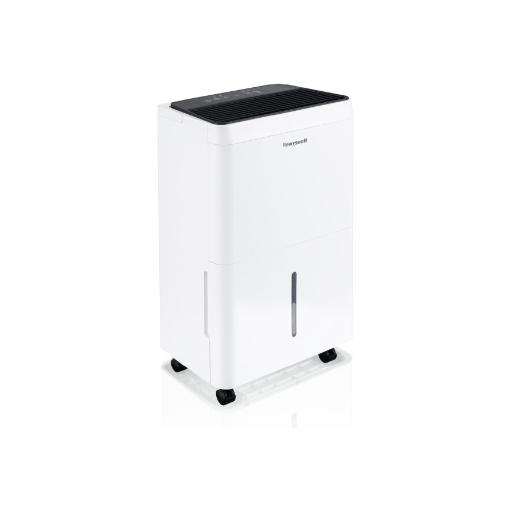
Impact of Continuous Use on Energy Consumption
Running any dehumidifier continuously really takes into consideration electricity consumption; thus, energy conservation is paramount for maximum efficiency. Modern dehumidifiers nowadays indicate energy efficiency in terms of liters of water removed per unit of electricity, better understood as per kilowatt-hour (kWh). Usually, newer ENERGY STAR models are estimated to be 15% more efficient than models without the certification, thus minimizing energy costs in long hours of operation.
Yet the energy consumption depends on other factors, including humidity levels in the room, capacity of the unit (generally measured in pints per day), and the operating temperature of the system. Generally speaking, a 50-pint dehumidifier will consume between 500 and 700 W every hour of continuous operation; therefore, by the end of a month, it would accumulate to roughly 15 to 20 kWh, depending on the environmental factors. Other efficient operations that can be established are auto-shutdown, humidity sensors, and programmable timers; these will surely prevent wasting excess power, hence providing good indoor air quality.
A good mix between performance and energy efficiency should be maintained since utilities tend to be very high. Additionally, regular upkeep of the appliance like cleaning of filters and ensuring free throughflow skyrocket its long-lasting efficient and economic operation.
Cost Implications of Running a Dehumidifier All Day
Running a dehumidifier throughout a 24-hour time frame causes significant costs because of energy consumption. Some of the considerations affecting the costing of running dehumidifiers include wattage of the unit, electric rates in the particular area, and the efficiency rating (Energy Star rating in most instances). Usually, dehumidifiers consume anywhere from 300 to 700 watts in one hour of use. Assuming an electricity rate of $0.12 per kWh, a regular 500-watt dehumidifier running nonstop can add $43 to the monthly bill, which comes to about $1.44 a day.
Thanks to modern dehumidifier technological advancements like variable-speed compressors and built-in smart features, you may get more value for less while minimizing operating costs. Nano-powered high-efficiency units perform via operation-level modulation according to room humidity needs, thus minimizing energy consumption. Moreover, limiting the running time during peak humidity hours through programmable settings will help keep down the cost.
Sizing the room and determining its humidity level should guide the choice of a dehumidifier with an appropriate capacity rating. In selecting, one should avoid purchasing one that’s oversized to prevent excessive power consumption; neither should it be limited to smaller capacity models that would force the unit to work over time and drain power. By learning about the aforementioned factors, homeowners will substantially reduce running costs, all the while maintaining a really comfortable indoor environment and fostering health.
Tips for Optimizing Energy Efficiency
- Implement Smart Thermostat Controls: Smart thermostats allow an accurate setting of inside temperatures, preventing heating or cooling when there is no need. Studies reveal that houses typically save 10-15% of energy as a result of setting the thermostat to programmed optimal temperatures according to occupancy schedules.
- Energy-Efficient Appliance: New appliances bearing the ENERGY STAR label use far less electricity than older ones. A replacement of an energy-efficient refrigerator will save about 15% annually in energy consumption.
- Seal Air Leakage: Gaps in insulation along windows, doors, or ductwork can mean heat loss, forcing HVAC systems into additional work. Sealing air leakage with caulking or weatherstripping can bring energy savings up to 20%.
- Install LED Lighting: LEDs consume as much as 75% less energy and last 25 times longer than incandescents. The current generation of LEDs not only saves energy but also reduces replacement trips, thereby reducing cost.
- HVAC System Maintenance: Regular filter cleaning, ductwork blockage checks, and professional servicing will keep your system efficient. When your system is operating at the highest efficiency, it will better conserve energy and extend the life of your equipment.
These measures will give homeowners a quantifiable reduction in energy consumption, alongside supporting environmental conservation and the affordability of utility billing.
Benefits of Using a Dehumidifier Throughout the Day
Improved Indoor Air Quality
Essential for protecting indoor air quality, a dehumidifier lowers humidity levels toward a proper high-normal range of about 30 before 50%. With high moisture, areas could become ideal environments for the proliferation of biological contaminants like mold, mildew, and dust mites-all detrimental to human life, particularly upon exposure to allergy and asthma patients or individuals with respiratory sensitivities. While preventing these allergens from proliferating, the dehumidifier greatly contributes to enhancing the hygiene and safety of the indoor environment.
Maintaining the right levels of humidity is said to reduce airborne particles that aggravate health conditions. For example, EPA states that lower indoor humidity levels can prevent mold-prone surfaces, damp patches, and other structural annoyances to air quality. Dehumidifiers empower homeowners to minimize these risks actively and enhance overall comfort by ensuring contaminants have little chance of thriving.
Another advantage of modern dehumidifiers is their ability to combine air purification systems like HEPA filtration. The air filters operate with humidity control to remove ultrafine particulates, bacteria, and VOCs, while the moisture control system maintains adequate moisture levels. Hence, these modern technologies ensure moisture control and provide cleaner and breathable air for the occupants. In essence, a contemporary dehumidifier is somewhat a necessity for improving living conditions and consequently diminishing health hazards associated with bad air quality.
Effective Moisture Control and Prevention of Mould
Modern moisture control technologies are increasingly efficient in tackling issues such as mold and moisture. State-of-the-art dehumidifiers comprise sensors and smart controls to maintain indoor humidity automatically within the recommended range of 30-50%. They also employ HEPA and activated carbon filtration to trap airborne mold spores and other allergens, thus reducing the chances of adverse health effects.
Furthermore, adequate ventilation plays a major role in moisture buildup. ERVs and HRVs provide balanced indoor air exchange from an energy-efficient standpoint. They will prevent condensation in suspected areas like the attic, basement, and crawl space, often areas susceptible to mold formation because of limited airflow and higher relative humidity.
Industry data suggest that when actively tackled to prevent moisture ingress, like sealing of cracks in foundations and putting in vapor barriers in crawl spaces, humidity ingress can be reduced by anywhere from 20 to 30% in severely affected homes. Together with world-class dehumidification systems, these methods represent several avenues for the prevention of mold, preservation of structural integrity, and promotion of healthier indoor environments.
Potential Risks: Wear and Tear or Over-Drying Air
The daytime dehumidifiers are intended to take care of moisture inside houses. These dehumidifiers can become potential hazards to the building’s service insulation and moisture if basic precautionary methods are not taken during their operation. Continuous operation without planned maintenance puts stress on the components of the systems, especially the compressors and the fans, thereby shortening their life and increasing energy consumption.
Over-drying the air by lowering relative humidity below 30% to 50% is detrimental to both living comforts and structural materials. Dry air may cause slight discomfort as the skin feels dry, respiratory passages become irritated, and static electricity builds up. Long-term drying leads to desiccation and shrinkage of wood, which may eventually crack, endangering floors, furniture, and even supporting structures.
To curb the risks, systems should be well balanced, indoor humidity levels should be regularly monitored by accurate hygrometers, and dehumidification units should be maintained under a preventive maintenance scheme. This balanced arrangement ensures the safe and efficient operation of the system while preserving the integrity of the indoor surroundings and the equipment.
Expert Recommendations on Dehumidifier Usage

Insights from HVAC Professionals
According to HVAC experts, all the more needful for appropriate installation and configuration that a dehumidifier be placed and configured properly to maintain its prime performance. Here are some guidelines with which to finally place the de-humidifier in the area with the highest humidity for efficient moisture extraction, and that obstruction to airflow is minimized. A 12″ clearance around the dehumidifier is recommended to ensure that it is not obstructed from airflow, which can reduce performance.
Also, one has to make sure to choose the right size for the room and humidity levels. Dehumidifiers will usually be rated in terms of pints of moisture removed per day, and this sizing can cause inefficiency and additional energy consumption due to oversizing or undersizing. For spaces beyond around 1,500 square feet or with severe hygrometry issues, it is imperative to consider an extra-large unit or an entire-house system.
Proper maintenance is also something the experts encourage for long-term dependability. Regular cleaning or replacement of air filters keeps the air flowing and prevents dirt build-up on the internal components of the device. Emptying the water storage reservoir or maintaining a continuous drain line helps prevent overflow cases from affecting the consistent operation. Periodic cleaning of the coils and inspection for refrigerant leaks will help extend the life of the equipment.
In the end, smart technology is the emerging force affecting the dehumidification system. Time-tested units with Wi-Fi interfaces and embedded sensors are working real-time to monitor conditions, adjust to fluctuation levels, and send repair alerts straight to the users. Incorporating these systems will increase efficiency and convenience while preventing environmental hazards due to excess moisture.
Advice from Appliance Manufacturers
When fretting about the dehumidification process, appliance manufacturers insist on conducting a thorough study into the specific requirements of the space before any purchase is made. This is important because key factors such as room size, average humidity level, and placement of the unit across the design all impact its working capacity and efficiency. Low-size places will often require high-capacity dehumidifiers; at the same time, vast rooms will appreciate smaller-scale portable units for their benefit. Heavier moisture control rejigging would result if the equipment sitting capacity were designed against the working environment.
Moreover, a greater number of manufacturers will give maintenance suggestions to prolong the working lifespan and efficiency of such equipment. Other than maintenance, the user could check for typical indicators: cleaning the filter, emptying the water reservoir, and looking at the accumulation of dirt on the coils every so often. Many contemporary systems have indicators that inform a user to clean a filter or empty a tank. These indicators, if heeded in time, keep the unit in optimum working condition and, at the same time, prevent further aggravation of the wear and tear of the mechanism. That means increased reliability over time and cost-effectiveness.
Finally, energy-efficient features and certifications like ENERGY STAR should be considered by purchasers as the manufacturer recommends. These systems optimize their energy consumption, thereby significantly decreasing utility expenses while having a small environmental footprint. Combining the smart tech options with energy-efficient ones is an excellent blend of user comfort and environmental accountability. Sticking to these expert recommendations helps you in paving the way for a solution with top performance, long life, and moisture control that best fits your personal needs.
Practical Tips for Homeowners
- Maintain HVAC Systems: Regular inspections should be conducted for your HVAC system for its efficient operation. Filters should be changed depending on the usage every 1-3 months. However, your HVAC system must be checked by professional service technicians annually at least. This proper maintenance will lead to more efficiency of the system and a longer lifespan before it requires a replacement or major repair.
- Seal Air Leaks and Install Insulation: Check your house for gaps that exist around windows, doors, and vents, and seal leaks with caulk or weatherstrip. At the same time, adding insulation to your attic, walls, or basement can reduce heat flow, which enhances energy efficiency and maintains steady indoor temperatures.
- Install Smart Thermostats: Smart thermostats give you precise control over the temperature inside, learning patterns of use to cut down on energy consumption. Most also support remote management through a mobile app. This means that homeowners can change settings while away from their homes-anything that would maximize convenience and minimize energy wastage.
- Water Conservation: Install low-flow fixtures and water-saving appliances. Drip faucets are to be fixed, and plumbing systems are to be checked for leaks to avoid waste of water and undue wear on infrastructure.
- Plan for Energy-Efficient Developments: Energy-efficient developments to promote: When replacing an appliance or home system, go for ENERGY STAR certification as they use less energy and hence better performance with less energy consumption, leading to lower utility bills and reduced environmental impact in the long term.
In combining all proactive measures, homeowners get to improve energy efficiency, cost reduction, and sustainability to last years down an infrastructure that is thus resilient.
Maintenance Tips for Optimal Performance
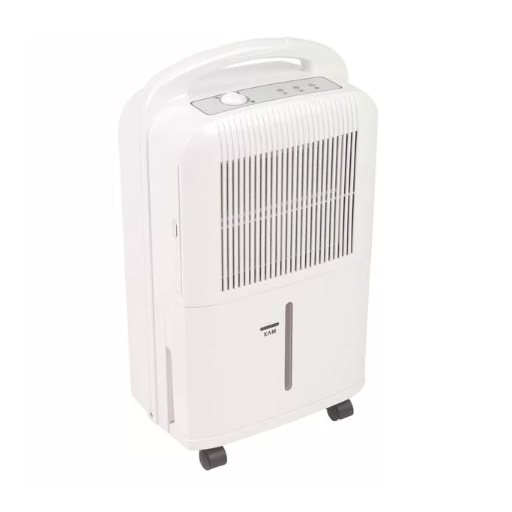
Cleaning and Maintaining Filters
Regular cleaning and filter maintenance are vital aspects of maintaining efficiency and lifespan for any appliance or HVAC system. Filters in appliances such as air conditioners, furnaces, and water purification devices catch dust, debris, and other contaminating agents from circulating into the environment of your home. Dust and dirt clutter the filters over time and sometimes hinder flow rate, demand greater energy consumption, and lower system efficiency.
Filters should be checked once a month and cleaned or changed if needed, usually every one to three months, depending on use and manufacturers’ recommendations. HEPA (High-Pressure Particulate Air) filters, for example, have particular maintenance conditions to be met for maintaining peak efficiency. Consider using washable filters wherever possible, as this will decrease long-term costs and waste.
The data further asserts that a rise in energy use of about 15% can be caused by poorly maintained filters, otherwise emphasizing the necessity of upkeep. Cleaner filters, therefore, contribute to better indoor air quality as well as save money by helping systems last longer. This, in turn, supports sustainability in the long run.
Monitoring Indoor Humidity Levels
The indoor humidity exerts a significant influence on human comfort and the health of a family or working environment. A typical considered range of optimal humidity levels lies between 30 and 50 percent. Different matters arise outside this range. Humidity levels that are too high create perfect environments for mold to grow and for the thriving of dust mites and other allergens, whereas dry air can cause dry irritation, static shocks, and cracking of wooden furniture and floors. Therefore, the correct measurement and control of indoor humidity should be implemented to safeguard the health of occupants and the life expectancy of building materials.
With advancements in technology, sophisticated and highly accurate hygrometers for humidity monitoring are available. These measure real-time humidity levels, provide humidity historical data, and alert users when levels fall out of the preprogrammed set range. In much bigger buildings or areas having complex HVAC systems, transpiring humidity sensors can further be integrated into the control of the system in such a way that dynamic adjustments and precise control are incorporated. It is also important to consider the outdoor weather, ventilation, and occupancy factor whenever evaluating indoor humidity since these components have an immediate effect on the moisture content in the air.
Proper dehumidification or humidification practice is necessary to solve any humidity-related problems. Dehumidifiers remove excess moisture very well, especially in basements or areas of risk prone to dampness. Conversely, central or portable humidifiers are best to add moisture to the air in drier surroundings. Regular maintenance through filter cleaning and ensuring the correct drainage of these units will contribute to their proper functioning. If these systems are coupled with data-based monitoring, they will be more effective in achieving a balanced environment. This kind of proactive approach not only protects the occupant’s well-being but also strives toward sustainability and energy efficiency.
Ensuring Safe and Efficient Operation
To safely and efficiently operate a modern environmental control system, certain considerations come to the fore. First and foremost, regular inspection and preventive maintenance are essential. For example, air filters, cooling coils, and mechanical moving components constitute the major portion of maintenance consideration, since they are the most vulnerable to failure. No maintenance means loss of efficiency, increased consumption of energy, or worse, complete system failure. Secondly, technicians metrologically calibrate the control systems to ensure that the settings of temperature, humidity, and airflow are accurately maintained within certain specified thresholds.
The advent of data-driven technology has truly transformed the way systems operate and monitor themselves, thereby allowing real-time analyses of system performance. The integration of IoT sensors into HVAC and air filtration machinery provides granular data such as temperature variances, pressure levels, and air quality indices. Once this data is processed through AI algorithms, it can unleash the magic of predictive insights. It can preempt expensive maintenance by lowering performance patterns and subtle deviations that signal a potential problem. Maximizing efficiency and reducing the carbon footprint by unnecessary energy waste would be some of the other benefits.
Last but not least, training is a crucial aspect often overlooked by many for operating safe and efficient working conditions. The personnel under whose responsibility these systems lie must be equipped in all respects – standard operating procedures, advanced troubleshooting, system software, data analytics interfaces, and emergency response protocols – to respond effectively and depending on the situation. Altogether, this equips the operators to work decisively in different conditions, giving lift to a multi-tier approach to system management, assuring longevity and reliability, international safety standard compliance, and a direct advantage toward end-users with a bigger ecosystem.
References
-
University of Rochester Medical Center: This source discusses the effectiveness of air filtration systems, including dehumidifiers, when operated continuously.
-
UC San Diego Health: Provides insights into the capacity and daily moisture removal capabilities of home dehumidifiers.
-
University of Florida IFAS Extension: Offers practical advice on using dehumidifiers effectively in humid climates.
-
Oregon State University Library: Discusses moisture problems in homes and the role of dehumidification as a solution.
-
U.S. Environmental Protection Agency (EPA): Highlights the importance of dehumidifiers in maintaining indoor air quality and preventing moisture-related issues.
Frequently Asked Questions (FAQ)
Q: Is it ok to leave a dehumidifier on all day?
A: Yes, it is generally safe to leave a dehumidifier running all day, especially if you are managing high humidity levels in your home. However, it’s important to monitor humidity levels to ensure they don’t drop too low. Experts recommend maintaining a relative humidity (RH) level of around 50% for optimal comfort and health.
Q: How does a dehumidifier work?
A: A dehumidifier works by removing excess moisture from the air, which helps to prevent mold and mildew growth. It draws in humid air, cools it to condense the water vapor, and then releases drier air back into the environment. This process helps to maintain a more comfortable indoor air quality.
Q: What is the best setting for my dehumidifier?
A: The best setting for your dehumidifier depends on the humidity levels in your area. Typically, setting the dehumidifier to maintain around 50% RH is effective. You can use a humidistat to monitor and adjust settings as needed.
Q: Can running a dehumidifier all day increase my electricity bill?
A: Running a dehumidifier constantly can lead to higher electricity bills, depending on the model and energy efficiency. To minimize costs, look for energy-efficient models and consider using a timer or humidistat to only run the dehumidifier when necessary.
Q: What type of dehumidifier is best for my home?
A: The best type of dehumidifier for your home depends on the size of the area and the humidity levels. For smaller spaces, a portable or desiccant dehumidifier may be suitable, while larger areas might require an industrial dehumidifier with a higher capacity.
Q: Where should I place my dehumidifier for the best results?
A: It’s important to position your dehumidifier in a central location to effectively circulate air around the room. Avoid placing it near walls or furniture that could obstruct airflow. A dehumidifier in your bedroom or on the landing can help maintain comfortable humidity levels.
Q: How can I maintain my dehumidifier?
A: Regular cleaning and maintenance are essential for optimal performance. Make sure to regularly clean or replace the filter and check the drain hose for clogs. Keeping your dehumidifier free of dust and debris will ensure it operates efficiently.
Q: Can a dehumidifier help with moisture problems from laundry?
A: Yes, using a dehumidifier during laundry mode can help manage moisture in the air caused by drying clothes. This is particularly useful in spaces where dampness can lead to mold growth, ensuring the air remains dry enough to prevent issues.
Q: How do I know if my dehumidifier is working properly?
A: To check if your dehumidifier is functioning correctly, monitor the humidity levels in the room. If the humidity levels are consistently above your target, it may indicate that the dehumidifier is not removing enough moisture. Additionally, check for any unusual noises or leaks from the unit.
Q: What should I do if my dehumidifier is not reducing humidity levels?
A: If your dehumidifier is not effectively reducing humidity, check that it is set to the correct humidity level, ensure that the filter is clean, and confirm that there are no obstructions to airflow. If problems persist, it may be necessary to consult the manufacturer’s guidelines or consider servicing the unit.

